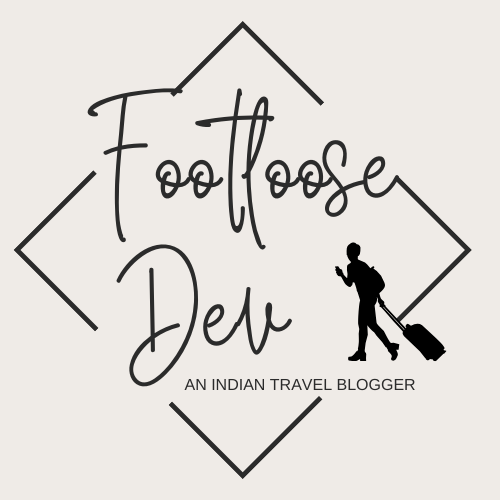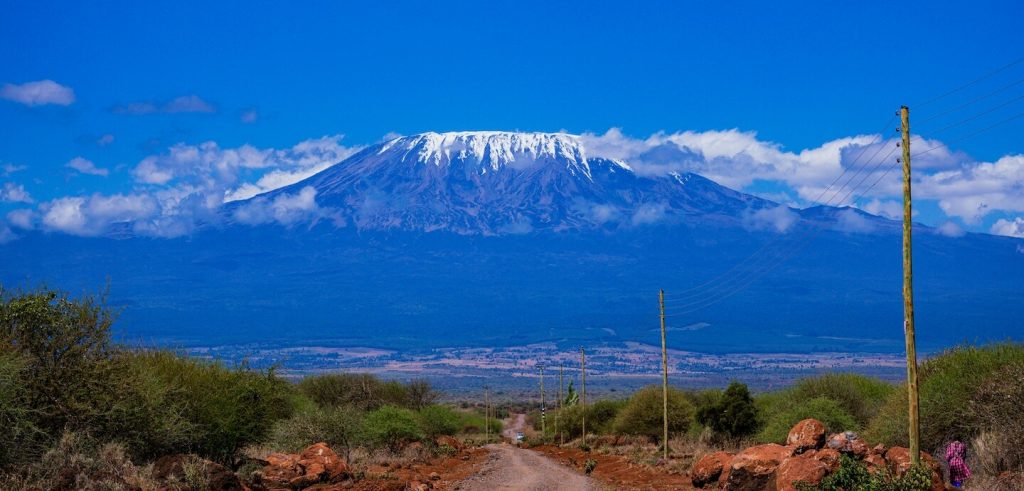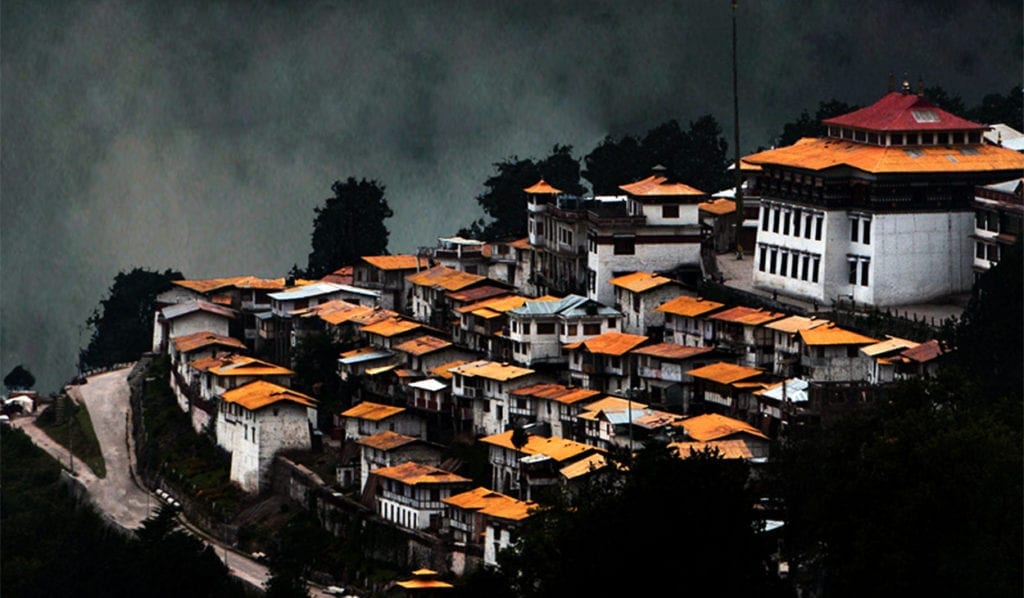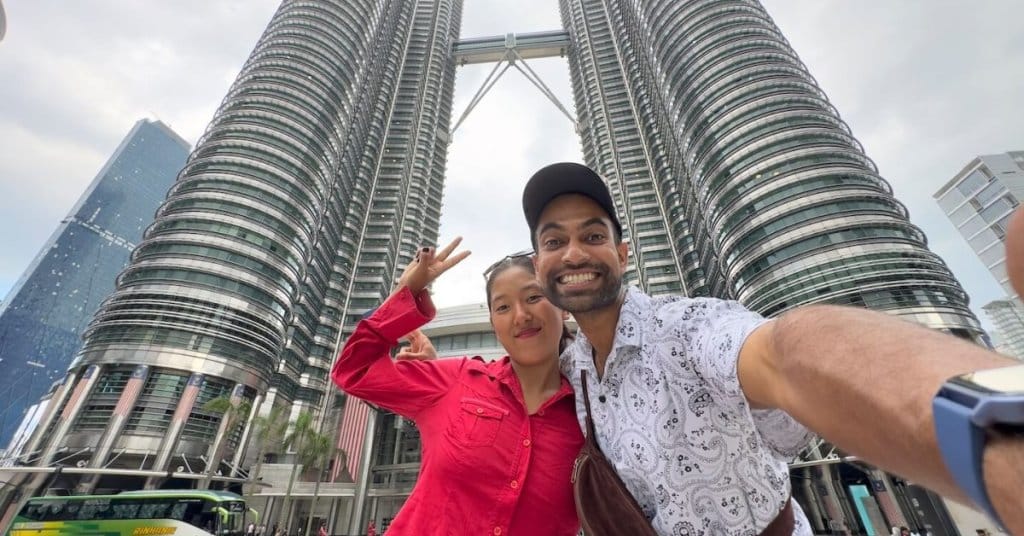Situated in Tanzania, East Africa, Kilimanjaro stands as an emblem of natural grandeur, attracting intrepid explorers from every corner of the globe.
This comprehensive travel guide for Kilimanjaro offers invaluable insights into its location, accessible routes, estimated costs, optimal visitation periods, and indispensable planning tips. Get ready to elevate your senses as you ascend Kilimanjaro’s majestic slopes and witness awe-inspiring panoramas unfurl before your eyes.
Where is Mount Kilimanjaro Located?
Perched majestically in Tanzania, East Africa, Mount Kilimanjaro dominates the landscape near the Tanzanian-Kenyan border. Reaching an impressive altitude of 5,895 meters (19,341 feet), Kilimanjaro serves as a beacon of natural wonder, captivating adventurers with its ethereal beauty.
Read more about Kilimanjaro National Park on Google if you are interested in knowing about its universal value.
How to Get There
Air Travel to Kilimanjaro International Airport (JRO)
Accessible from major international hubs such as Amsterdam, Istanbul, Doha, and Nairobi, Kilimanjaro International Airport (JRO) serves as the primary point of entry for travelers. Upon touchdown, an array of ground transportation options, including shuttles and taxis, await to whisk you away to nearby towns like Moshi or Arusha, the gateway to Kilimanjaro’s trekking routes.
What Routes Are There on Kilimanjaro?
Marangu Route
Dubbed the “Coca-Cola Route,” the Marangu Route is a favored path among trekkers for its well-established trails and cozy hut accommodations. Offering a gentle ascent, this route appeals to adventurers seeking a comfortable and accessible Kilimanjaro experience.
Machame Route
Renowned as the “Whiskey Route,” the Machame Route entices thrill-seekers with its rugged terrain and breathtaking vistas. Traverse through diverse landscapes, including lush rainforests and barren alpine deserts, as you ascend Kilimanjaro’s slopes on this exhilarating route.
Lemosho Route
Embraced for its unspoiled wilderness and sweeping panoramas, the Lemosho Route promises an immersive journey through Kilimanjaro’s pristine landscapes. Wander amidst dense rainforests, expansive heathlands, and dramatic alpine vistas, immersing yourself in the mountain’s raw beauty.
How Much Does it Cost?
The cost of a Kilimanjaro expedition varies depending on several factors, including route selection, trek duration, and service standards offered by tour operators. Typically ranging from $1,500 to $5,000 per person, this investment encompasses park fees, permits, guide and porter services, accommodation, meals, and transportation to and from the mountain.
Best Time to Visit Kilimanjaro
Optimal climbing seasons for Kilimanjaro fall between January to March and June to October, characterized by favorable weather conditions and minimal precipitation. However, Kilimanjaro welcomes climbers year-round, each season offering unique climatic experiences and awe-inspiring vistas.
How Difficult is Kilimanjaro Trek?
Embarking on a Kilimanjaro trek is undoubtedly a thrilling adventure, but many wonder about the level of difficulty they can expect. The difficulty of the Kilimanjaro trek can vary depending on factors such as the chosen route, individual fitness levels, and the altitude’s effects. Routes like the Marangu Route offer a relatively gentler ascent compared to the more challenging Machame or Lemosho Routes.
However, regardless of the route chosen, trekking Kilimanjaro demands physical endurance, mental resilience, and proper preparation. Trekkers should be prepared to navigate through diverse terrain, ranging from lush rainforests to barren alpine deserts, and cope with altitude-related challenges.
With adequate training, determination, and the guidance of experienced guides, conquering Kilimanjaro is an achievable feat for many adventurers.
Can Beginners Climb Mt Kilimanjaro?
Aspiring adventurers often wonder if beginners can tackle the challenge of climbing Mt Kilimanjaro. While Kilimanjaro is a formidable peak, beginners with a reasonable level of fitness and determination can certainly undertake the journey.
Opting for routes like the Marangu Route, known for its relatively moderate gradient and hut accommodations, can be a suitable option for novice trekkers.
Additionally, enlisting the services of reputable tour operators and experienced guides can provide invaluable support and guidance throughout the trek. Beginners need to prioritize physical conditioning, acclimatization, and mental preparedness to enhance their chances of summit success. With proper planning, determination, and the right mindset, beginners can conquer the challenge of climbing Mt Kilimanjaro and experience the thrill of reaching Africa’s highest peak.
I suggest you take one of the package tours. Various companies organise Kilimanjaro and other African Safari tours, and I recommend Altezza. With number 1 ranting for similar tours in Africa on Tripadvisor, they organize safari adventures and Kilimanjaro expeditions with a strong emphasis on safety, quality, and comfort.
How Long Does it Take to Climb Mount Kilimanjaro?
The duration of a Kilimanjaro trek can vary depending on several factors, including the chosen route, trekking pace, and acclimatization strategy. On average, most Kilimanjaro treks range from 5 to 9 days, allowing trekkers ample time to acclimate to the altitude and complete the ascent safely. Routes like the Marangu Route, known for its shorter duration, typically take around 5 to 6 days to summit and descend.
In contrast, more challenging routes like the Machame or Lemosho Routes may require 6 to 9 days due to their longer and more strenuous itineraries. Trekkers must choose a route that aligns with their fitness levels, preferences, and time constraints, ensuring a rewarding and manageable trekking experience on Africa’s tallest peak.
Unique Ecological Zones of Mt Kilimanjaro
Mount Kilimanjaro is renowned not only for its towering summit but also for its unique ecological zones, each boasting distinct flora and fauna. As trekkers ascend Kilimanjaro’s slopes, they traverse through several ecological zones, each characterized by its microclimate and biodiversity.
The trek begins in the lush rainforest zone, where towering trees, ferns, and colorful bird species abound. As the altitude increases, trekkers transition through heath and moorland zones, marked by open grasslands and unique plant species adapted to the harsh alpine conditions.
Above the treeline, trekkers enter the alpine desert zone, where only hardy lichens and mosses can survive. The ecological diversity of Kilimanjaro adds an extra layer of fascination to the trekking experience, providing trekkers with an opportunity to witness nature’s resilience and adaptation in the face of extreme conditions.
Tips to Keep in Mind While Planning a Trip to Kilimanjaro
- Prioritize Physical Conditioning: Embark on a pre-trek fitness regimen to enhance endurance and stamina.
- Pack Strategically: Equip yourself with lightweight, moisture-wicking apparel, sturdy hiking boots, and essential trekking gear to ensure comfort and safety on the mountain.
- Acclimate Wisely: Choose a route with adequate acclimatization days to mitigate the risk of altitude sickness and optimize summit success.
- Hydrate and Refuel: Maintain hydration and nourishment levels throughout the trek with ample water intake and nutrient-rich snacks.
- Follow Expert Guidance: Entrust your Kilimanjaro journey to experienced guides and porters who possess intimate knowledge of the mountain’s terrain and challenges.
If you have a question or would like to connect, please find me on Instagram. You can also follow my YouTube channel for video updates.



